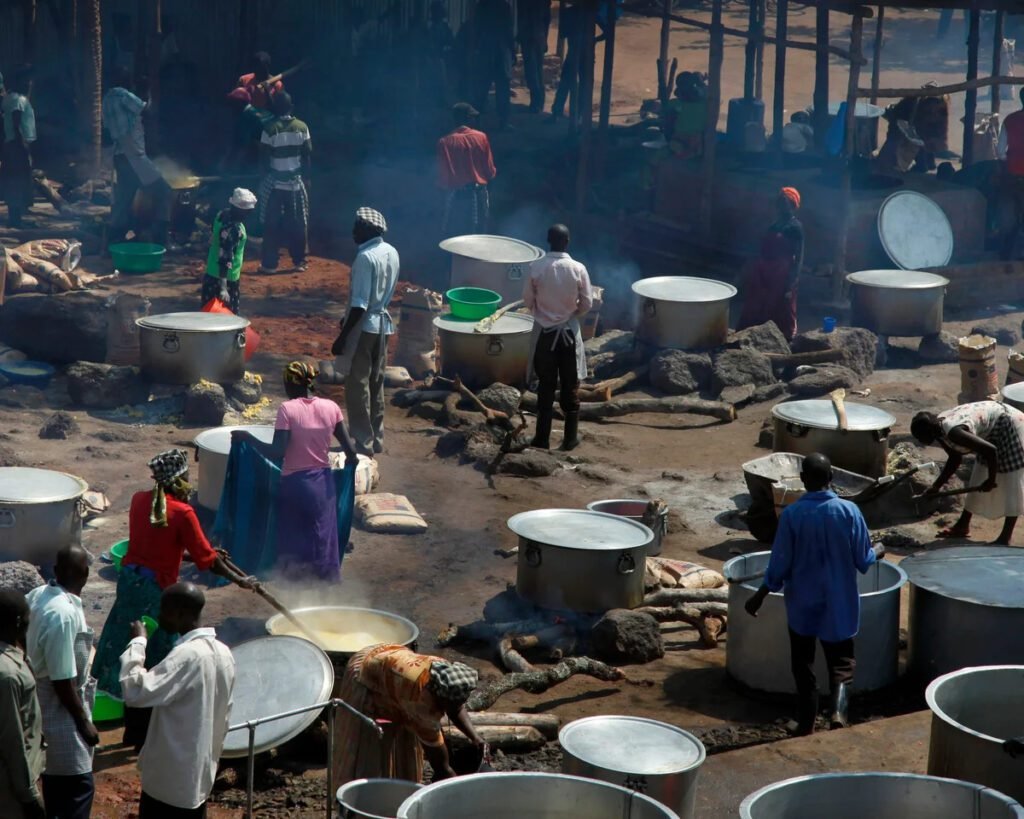Gleaming Labs :The escalating civil war in Sudan has left an indelible mark on the country’s medical research and healthcare system. Once thriving institutions, dedicated to advancing the fight against diseases and improving the quality of life for Sudanese citizens, have been obliterated by the relentless violence. Research labs, universities, and medical centers, which were once hubs of groundbreaking work, now lie in ruins. For the scientists who dedicated their lives to these institutions, the destruction represents more than just the loss of infrastructure; it marks the erasure of decades of medical progress that was aimed at improving health outcomes in Sudan and beyond. As researchers and medical professionals grapple with this devastation, the profound implications of the loss of medical research in Sudan are becoming clearer.
The Devastation of Key Medical Research Institutions
Among the most significant casualties of the ongoing conflict is the Mycetoma Research Center (MRC), located in Khartoum. Established in 1991 under the University of Khartoum, the MRC had become the world’s oldest and only research facility dedicated to studying mycetoma, a neglected tropical disease that affects millions of people in sub-Saharan Africa, including Sudan. This debilitating condition, which can cause severe disfigurement, had long been under-researched. Thanks to the MRC’s efforts, there was finally a dedicated space for the scientific study of the disease, with researchers working tirelessly to better understand its causes, treatments, and prevention.
Before the war, the MRC had become an integral part of Sudan’s healthcare infrastructure. It housed a large collection of biological samples, medical records, and research findings. In 2023, these invaluable assets were lost when the lab was hit by airstrikes and artillery fire, leaving it in rubble. The destruction of the MRC represents more than just the loss of a building—it marks the end of decades of research and hard work to address a disease that had long been overlooked by the global medical community. The biological banks, containing over 40 years of critical data, are now lost to history, erasing years of medical progress.

The National Public Health Laboratory (NPHL) in Khartoum was another major victim of the conflict. The NPHL housed important biological isolates, including those of the poliovirus, measles virus, and Vibrio cholerae. The laboratory also played a central role in Sudan’s surveillance efforts, particularly in monitoring outbreaks of infectious diseases. When the RSF (Rapid Support Forces) overtook the facility in 2023, its operations were severely compromised. The WHO (World Health Organization) issued urgent warnings about the risks posed by the loss of these biological materials, particularly as they were no longer contained in a secure environment. The loss of the NPHL is another major blow to Sudan’s public health infrastructure, further weakening the country’s ability to respond to disease outbreaks.
The destruction of these institutions is part of a broader pattern of attacks on Sudan’s medical infrastructure. Numerous hospitals, clinics, and health centers across the country have been either destroyed or repurposed for military purposes, making it increasingly difficult to provide care to the civilian population. With healthcare systems in shambles, the Sudanese people are left vulnerable to disease, malnutrition, and a lack of basic medical care.

The Impact on Medical Education and Training
Sudan has long been a hub for medical education in the region, with universities and medical schools training a large number of healthcare professionals who went on to serve not only Sudan but also other countries in Africa and the Middle East. However, the war has decimated the country’s higher education institutions, particularly those dedicated to medical training. More than half of Sudan’s medical schools have been attacked, and a significant portion of them has been looted or repurposed as military bases.
One of the most impacted institutions is the University of Khartoum’s Faculty of Medicine, which has been forced to halt operations as the conflict continues. The disruption of medical education has created a void in the training of new healthcare professionals. Sudan already faced a shortage of doctors and nurses prior to the war, and this crisis is exacerbating the situation. The conflict has left many young medical students stranded, unable to complete their studies or contribute to the country’s health workforce.
Moreover, the destruction of universities and training hospitals has led to the displacement of faculty members and researchers. Many have fled Sudan, seeking safety in neighboring countries, while others have been forced to abandon their work altogether. The loss of these experts, who would have trained the next generation of healthcare professionals, has left Sudan with a glaring gap in medical expertise. This shortage of trained personnel makes it even more difficult for the country to respond to the growing health crisis.
The Human Cost of the Loss
The consequences of these losses are profound. Sudan’s healthcare system has been ravaged, and the toll on the Sudanese people is immeasurable. The loss of medical research means that many critical studies aimed at combating endemic diseases, improving public health strategies, and understanding the unique health challenges of the region are now halted indefinitely. Diseases like mycetoma, schistosomiasis, malaria, and chronic kidney disease have long been endemic in Sudan. Without research and continued progress, Sudan may find it increasingly difficult to develop effective treatments and public health initiatives to combat these diseases.
The lack of functioning healthcare institutions has also led to a shortage of medicines, medical supplies, and personnel. Health facilities that remain operational are overwhelmed by the number of people in need of care. Hospitals and clinics are unable to cope with the influx of casualties caused by the fighting, and basic medical treatments are in short supply. Many people are being forced to go without life-saving treatments, which has only worsened the humanitarian crisis.
In addition, Sudan’s displaced population has been forced to seek refuge in already overstretched cities like Port Sudan, where many find themselves without access to basic medical care. The destruction of medical infrastructure means that diseases can spread unchecked, creating the potential for outbreaks that could further devastate the country.
International Response and the Road to Recovery
The international community has not stood idly by in the face of Sudan’s devastation. Humanitarian organizations, such as the United Nations, World Health Organization, and Doctors Without Borders, have been working tirelessly to provide aid to Sudan’s displaced population and to support the country’s healthcare workers. However, their efforts are hampered by the ongoing conflict, as well as the lack of access to certain areas that remain under the control of armed groups.
Rebuilding Sudan’s medical infrastructure will be an immense challenge. The destruction of research facilities, universities, and hospitals is a long-term setback for Sudan, and recovery will require significant financial investment and political stability. It will also require the reintegration of scientists, doctors, and educators who have fled the country, as well as the rebuilding of trust in the healthcare system.
In the meantime, many Sudanese researchers and medical professionals are trying to continue their work in exile, collaborating with international institutions to ensure that Sudan’s medical needs are not forgotten. These efforts are commendable, but they are unlikely to be a substitute for the kind of homegrown medical research and training that was once possible within Sudan’s borders.
Looking Ahead: A Long Road to Healing
The loss of decades of medical progress in Sudan represents a catastrophic setback for the country’s healthcare system. As the war rages on, it is unclear how long it will take for Sudan to recover from the destruction. The international community must continue to provide aid and support to the Sudanese people, but recovery will ultimately depend on the ability of Sudan’s government, institutions, and citizens to rebuild and restore their country’s health system.
Despite the destruction, the resilience of Sudan’s medical community gives hope that, one day, the country will recover and continue its journey toward medical and scientific advancement. For now, the road ahead is long, but there is still hope that the loss of these gleaming labs can be overcome with time, dedication, and international support.
Do follow Uae stories for more Updates
Port Sudan International Reopens After Rocket Strikes: A Glimmer of Hope Amidst Ongoing Conflict














